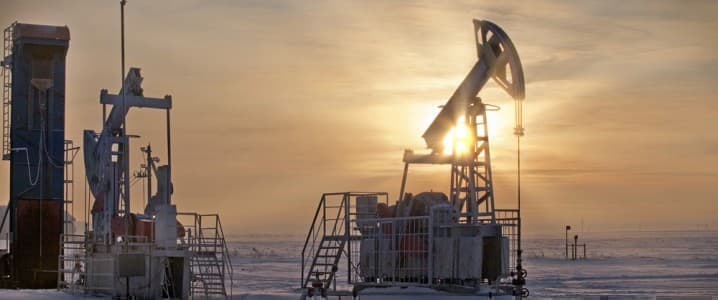
StanChart says continuing consumer reluctance to buy from Russia and shortages of capital, equipment, and technology will continue to depress Russian output over, at least, the next three years. The commodity experts have predicted that Russia's output will fall by 1.612 million barrels per day (mb/d) y/y in 2022 and a further 0.217mb/d in 2023, with the y/y decline peaking at 2.306mb/d in Q2-2022.
Oil prices and energy stocks are trading at multi-year highs after international refiners adopted a self-imposed embargo, with many reluctant to buy Russian oil and banks refusing to finance shipments of Russian raw materials. Refiners and banks are unwilling to do business with Russia due to the risk of falling under complex restrictions in different jurisdictions. Market participants are also concerned about measures directly targeting oil exports.
Big Supply Deficit
Russia's difficulty in marketing its oil is likely to open up a significant supply deficit.
StanChart says that rebalancing the oil markets would require around 2mb/d extra supply for the remainder of 2022, mainly due to the current very low inventory levels, and an additional 2mb/d in Q2 to ease the dislocations caused by the displacement of Russian oil. StanChart's model assumes that the current OPEC+ deal continues, no increase in Iran's exports and U.S. output growth Y/Y is just over 1.5mb/d.
But here's the main kicker from the StanChart report: only OPEC can bridge the big supply deficit.
StanChart estimates that an Iran deal could potentially provide an extra 1.2mb/d in H2-2022, still leaving a significant gap that can only be realistically filled by those OPEC members with spare capacity, particularly Saudi Arabia and the UAE.
And the oil markets might just get their wish.
The UAE's ambassador to Washington, Yousef Al Otaiba, told CNN on Wednesday that the country wants to increase oil production and will encourage the Organization of the Petroleum Exporting Countries (OPEC) to ramp up supply. So far, OPEC+ has defied pressure by developed nations to sharply ramp up production to meet the growing deficit, choosing to stick to its earlier policy of increasing production by 400,000 b/d every month.
"The UAE cracked. They were one of the last holdout. Now that they said it, you can expect the Saudis will say the same thing,"Robert Yawger, vice president of energy futures at Mizuho Securities, has told CNN.
And more help might come from yet another oil and gas powerhouse: the United States.
In the friendliest rhetoric yet from the Biden administration, U.S. Energy Secretary Jennifer Granholm has appealed to energy companies to ramp up their oil and gas production to help meet global demand and bridge the shortfall left by Russia's war in Ukraine.
"We are on a war footing. The DoE and the Biden administration is ready to work with you... We need oil and gas production to rise to meet current demand," Granholm told the CERAWeek by S&P Global energy conference in Houston.
Fearing a repeat of the past decade, a majority of U.S. producers are eschewing production growth, opting to return excess cash to shareholders. Over the past five or so years, U.S. shale, in particular, earned the ire of Wall Street for its trigger-happy production policy, leading to mounting debts and years of poor shareholder returns.
However, a growing number of producers are now willing to go against the grain.
Exxon Mobil Corp. (NYSE:XOM) says it's planning to significantly grow production and increase Permian production by as much as 25% in 2022. Meanwhile, Devon Energy (NYSE:DVN) and Pioneer Natural Resources (NYSE:PXD) have indicated a willingness to increase production, with Pioneer CEO Scott Sheffield recently saying that the industry could grow production by ~1mb/d annually for three years. Sheffield went on to say his firm would participate in a coordinated effort to accelerate U.S. production growth.
The world is facing an extraordinary energy crisis, and investors are likely to be much more welcoming to the idea of U.S. shale opening up the taps again.